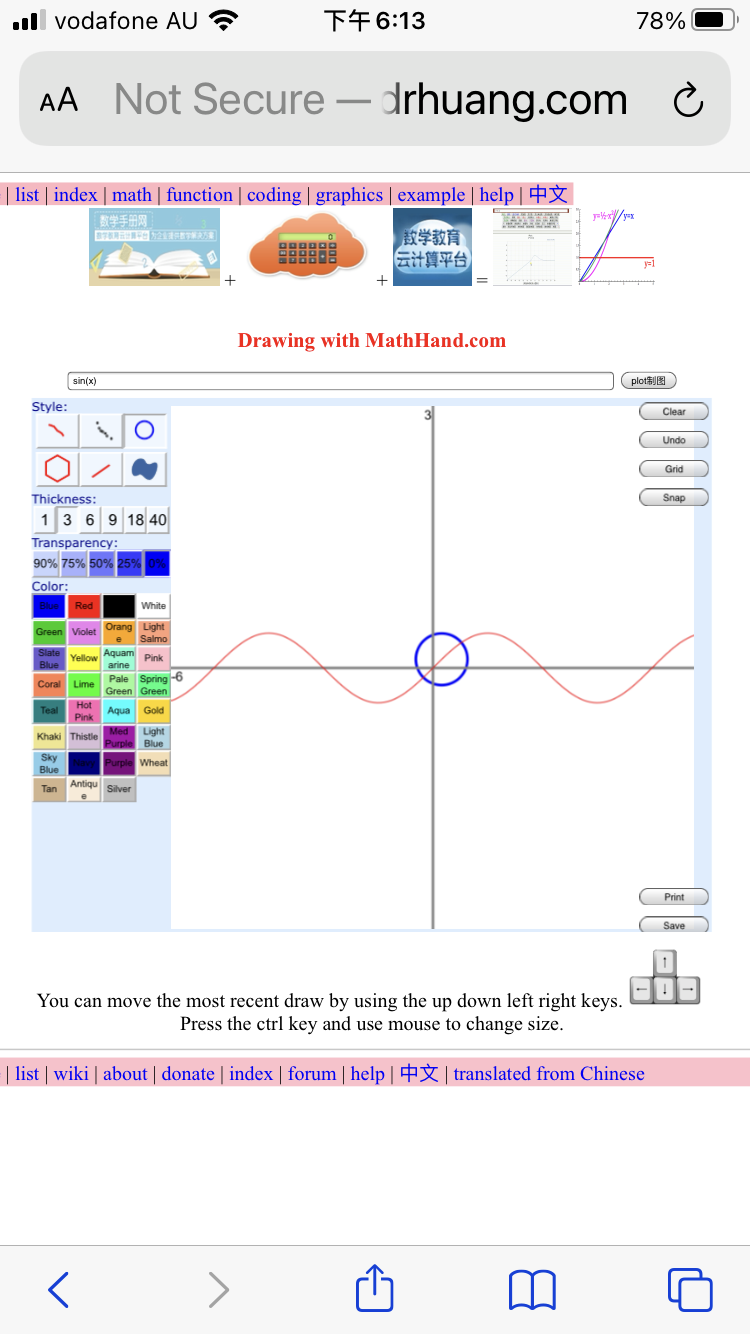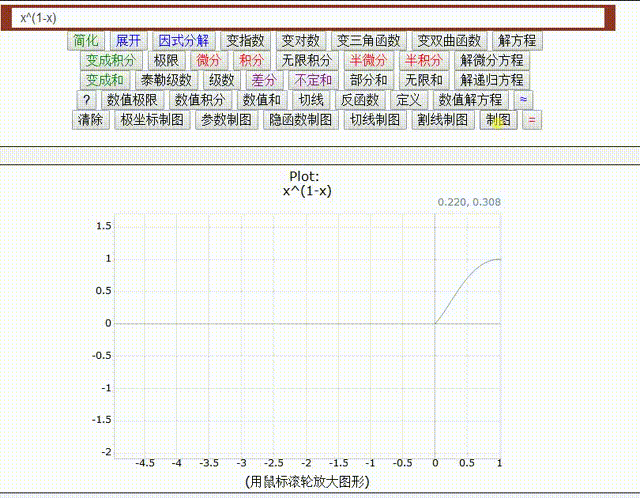 +
+  +
+  +
+  =
= 
 +
+  +
+  +
+  =
= 
The default precision for BigNumber is 64 digits, and can be configured with the option precision.
// no round-off errors with BigNumbers :)
more are in numeric math
more are in complex function with complex3D(x) in complex domain of complex variable x.
more are in complex2D show 2 curves of real and imag parts in real and imag domains.
more example in JavaScript mathjs
more calculus operation in JavaScript calculus
You should expand it into polynomial
solve(x) also solve other algebra equation, e.g.
if solve(x) cannot solve, then click the numeric button to solve numerically.
math handbook chapter 20.3 congruence
a x ≡ b* (mod m) means two remindars in both sides of equation are the same, i.e. congruence, it is the same as the modular equation mod(a*x,m)=mod(b,m). if b=1, the modular equation mod(a*x,m)=1 can be solved by inversemod(a*x,m). By definition of congruence, a x ≡ b* (mod m) if a x − b is divisible by m. Hence, a x ≡ b (mod m) if a x − b = m y, for some integer y. Rearranging the equation to the equivalent form of Diophantine equation a x − m y = b, which can be solved by solve(a*x-m*y=b,x,y).
It is that number of equation is less than number of the unknown, e.g. one equation with 2 unknowns x and y.
more examples in bugs
More examples are in Analytical Solution of Fractional Differential Equations
Input your function, click the Fourier button :
When the variable x of polynomial is numnber, it becomes polynomial number :
solve mod(x^2-5x+7,2)=1 for
(x^2-5x+7) mod 2 = 1
solve mod(x^2-5x+6,2)=0 for
(x^2-5x+6) mod 2 = 0
more example is number theory in function and in JavaScript javascsript math
more example in JavaScript mathjs
more example in JavaScript mathjs
list(1,2,3), max(1,2,3), min(1,2,3), abs(1,2,3), hypot(1,2,3), total(1,2,3)
more example in JavaScript mathjs
It has direction. the position of the element is fix so we cannot sort it. numeric vector is number with direction. the system auto plot the 2-dimentional vector. two vector(x) in the same dimention can be operated by +, -, *, /, and ^, the result can be checked by its reverse operation.
There are two types of vector: symbolic vector(a,b) and numeric vector([1,2])
Complex array [[1,2],[3,4]] can be operated by +,-,*,/,^,
more example in JavaScript mathjs
Complex matrix([[1,2],[3,4]]) can be operated by +,-,*,/,\,^,